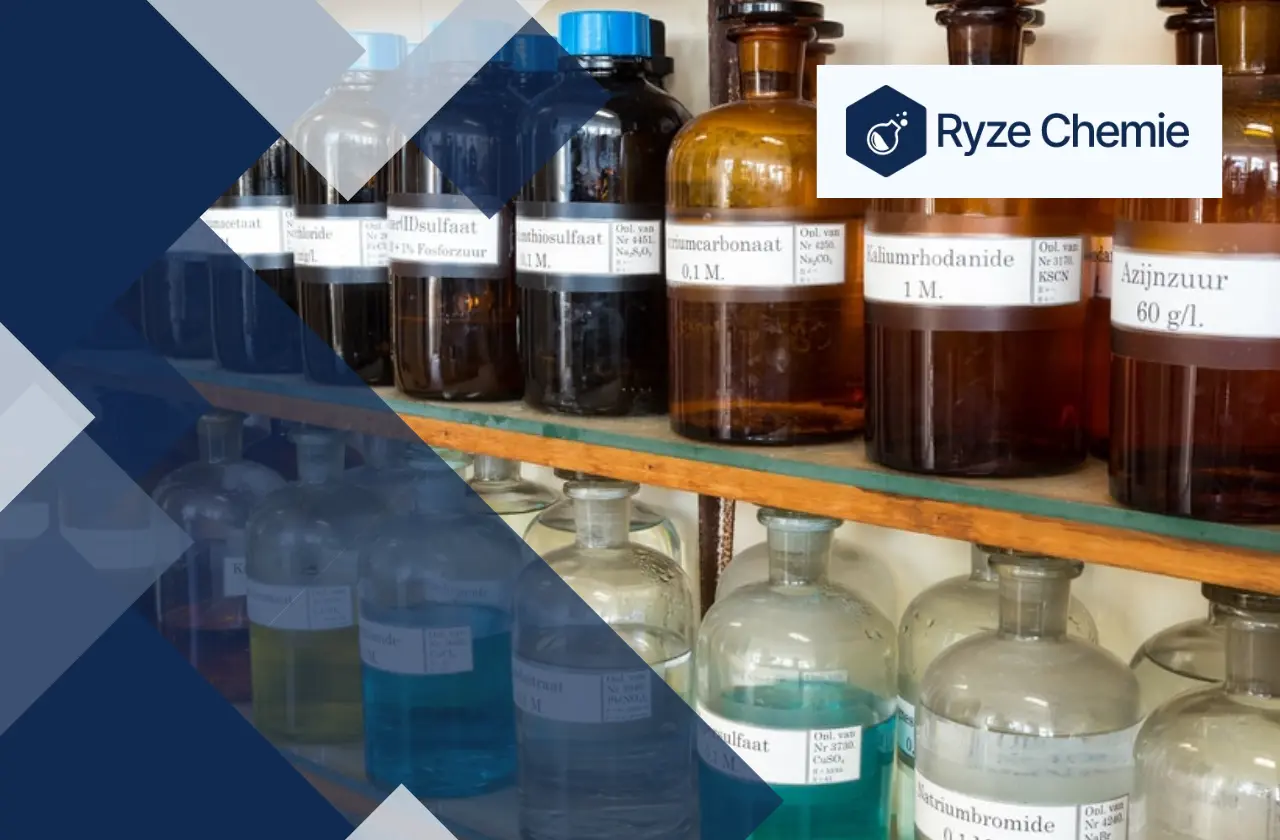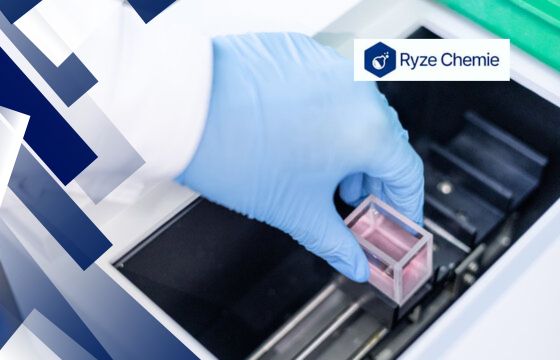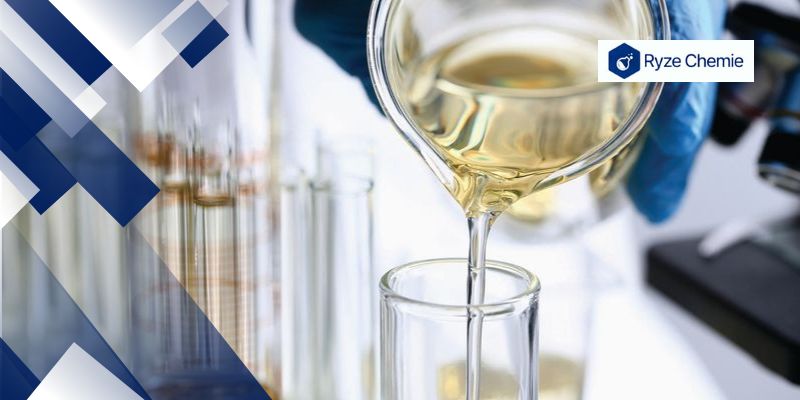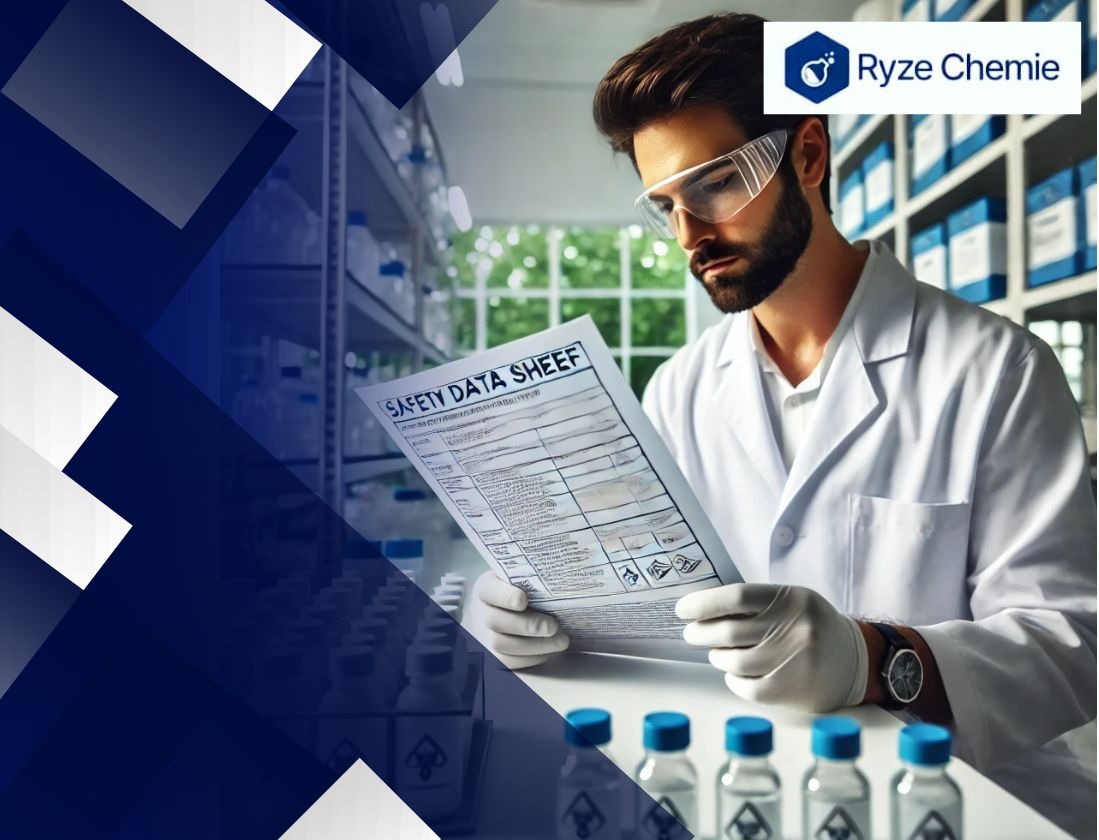
Stay up-to date on the
latest blogs. Join our
newsletter today!
This site is protected by reCAPTCHA and the Google Privacy Policy and Terms of Service apply.
How Should Chemicals Be Stored: All You Need to Know (2024)

9 mins read · May 12, 2024

Keeping chemicals organized and safe in a lab can be a challenge. Improper storage can lead to spills, fires, and harmful reactions. These accidents can injure personnel, damage equipment, and disrupt research.
This article provides clear guidelines for storing chemicals safely and efficiently. We'll cover everything you need to know, from segregation by hazard class to container selection. By following these best practices, you can create a safe and organized environment for your lab.
Core Principles of Safe Chemical Storage
Safe chemical storage is critical for any laboratory environment. Improper storage practices can lead to accidents, injuries, and even property damage. By adhering to these core principles, laboratory personnel can ensure a safe and healthy work environment.
Hazard Identification and Assessment:
The first step to securing a storage facility is understanding the hazards you face. Here's what you need to know:
Recognizing different hazard classes: Chemicals are categorized by their risk classes. Typical classes consist of flammable liquids, compressed gasses, poisonous substances, corrosives, and oxidizers. Each class has particular storage requirements to minimize dangers.
Importance of Safety Data Sheets (SDS) and chance pictograms (GHS): The Safety Data Sheet (SDS) is a crucial, valuable resource containing distinct statistics about a specific chemical's dangers, safe handling processes, and first-aid measures. The Globally Harmonized System of Classification and Labeling of Chemicals (GHS) uses pictograms on chemical labels to communicate information quickly and easily. Familiarize yourself with both the SDS and GHS pictograms for every chemical you handle.
Understanding chemical compatibility and incompatibility: Certain chemicals can react violently while stored together. For instance, solid acids and bases can generate heat and risky fumes. The SDS will offer data on incompatible chemical compounds. Segregate incompatible chemical substances throughout storage to save you from dangerous interactions.
Chemical Container Management:
Proper container management is essential for safe and organized storage.
Proper labeling of containers: All chemical containers, including secondary containers, must be clearly labeled. The label should include the chemical name, hazard pictograms, and any relevant information like signal words (e.g., DANGER, WARNING) and phrases. Date the label when you receive the chemical and again when it's opened for the first time.
Choosing the right container material: The container material should be compatible with the chemical it holds. For example, some chemicals can degrade certain plastics. Consult the SDS for recommendations on appropriate container materials.
Regular container inspection: Inspect containers regularly for signs of leaks, cracks, or damage. Pay attention to lids or caps; ensure they close securely. Replace any damaged containers immediately.
Safe handling practices to minimize spills and contamination: Always carry containers by the base, not the lid. Use a secondary container for particularly hazardous or leaky chemicals. Pour chemicals slowly and carefully into a well-ventilated area. Close containers tightly after use. If a spill occurs, follow established procedures for cleanup and disposal.
Now, let's discuss practical strategies for chemical storage to further enhance safety measures in your laboratory.
Chemical Storage Strategies
Implementing effective chemical storage strategies is essential for preventing accidents and ensuring the integrity of stored chemicals. By employing proper storage techniques, laboratories can minimize the risk of spills, leaks, and other hazardous incidents:
1) Storage Location
Designated storage areas based on hazard class: Chemicals should be grouped and stored based on their hazard class. Flammables, corrosives, oxidizers, and toxins should all have designated storage areas. This segregation prevents accidental mixing that could lead to dangerous reactions.
Flammable liquids in approved safety cabinets: Flammable liquids with flash points below a specific temperature (usually 38°C or 100°F) require storage in flammable safety cabinets. These cabinets are designed to contain spills and prevent vapors from reaching ignition sources.
Acids and bases stored separately in designated cabinets with acid/base resistant trays: Acids and bases should be stored in separate cabinets constructed of acid/base resistant materials. These cabinets should have built-in trays or shelves to capture any spills or leaks.
Gas cylinders secured upright with proper restraints: Gas cylinders must be secured upright and chained or strapped to a wall or cart to prevent them from falling over. Keep the valve caps on cylinders when not in use.
Considering temperature, ventilation, and lighting conditions: Store chemicals in a cool, dry, and well-ventilated area. Avoid storing chemicals near heat sources, direct sunlight, or building exits. Excessive heat can accelerate chemical degradation and increase the risk of reactions. Direct sunlight can also degrade some chemicals. Exits should be clear to allow for safe evacuation in case of an emergency.
2) Organizational Strategies
Segregating incompatible chemicals based on hazard class: Incompatible chemicals should never be stored together. Common incompatibility examples include acids and bases, oxidizers and flammables, and strong oxidizers with organic materials. Refer to a chemical compatibility chart to identify incompatible chemicals.
Not storing chemicals alphabetically unless compatible: Alphabetical storage can unintentionally place incompatible chemicals next to each other. Only store chemicals alphabetically if you are certain they are compatible.
Utilizing secondary containment (trays, spill berms) for liquids: Use trays or spill berms to contain potential leaks or spills from liquid chemicals. This secondary containment will prevent spills from spreading and contaminating other chemicals or surfaces.
Minimizing clutter and maintaining clear walkways: A cluttered storage area increases the risk of accidents. Organize chemicals neatly and keep walkways clear to allow for safe movement and access to equipment.
3) Inventory Management
Maintaining an accurate inventory of chemicals: Keep a detailed inventory of all chemicals stored in the laboratory. The inventory should include the chemical name, hazard class, quantity, storage location, and expiry date (if applicable). Regularly update the inventory to reflect changes in stock levels.
Implementing a first-in, first-out (FIFO) system for managing stock: Use a FIFO system to manage chemical stock. Use the oldest chemicals first to prevent expired chemicals from accumulating. This reduces the risk of using degraded chemicals that may have changed properties or become unstable.
Disposing of expired or unwanted chemicals following proper procedures: Never dispose of chemicals down the drain or in the trash. Expired or unwanted chemicals should be disposed of according to local regulations and safety protocols. Contact your institution's hazardous waste disposal department for proper disposal procedures.
Following these strategies will create a safe and organized chemical storage environment in your laboratory. By properly storing and managing chemicals, you can minimize the risk of accidents and ensure a safe working environment for yourself and others.
Next, we'll explore best practices for daily operations to ensure ongoing safety and efficiency in your laboratory.
Best Practices for Daily Operations
Incorporating best practices into daily operations is key to upholding safe chemical storage standards. By following these practices consistently, laboratory personnel can promote a culture of safety and reduce the likelihood of accidents or mishaps:
1) Using Personal Protective Equipment (PPE) Appropriate for the Chemical Being Handled
- Identify hazards. Before starting any experiment, review the Safety Data Sheet (SDS) for the chemicals you'll be using. The SDS details potential hazards and appropriate PPE.
- Select the right gear. Common PPE includes gloves, safety glasses or goggles, lab coats, and respirators. Choose gloves made from material resistant to the chemicals you're handling. Goggles or a face shield should protect your eyes and face from splashes.
- Inspect PPE before use. Check for rips, tears, or cloudiness in gloves and goggles. Replace damaged PPE immediately.
- Wear PPE throughout the experiment. Don't remove gloves or safety glasses mid-task, even for a short break. Put them back on before continuing.
- Dispose of PPE properly. Follow lab protocols for discarding used PPE. Contaminated gloves should not be reused.
2) Transporting Chemicals Safely Within the Laboratory Using Secondary Containment
- Use secondary containers. Whenever transporting chemicals, use a sturdy, leak-proof secondary container, like a tray or bin. This catches spills or leaks, preventing contamination and injuries.
- Carry chemicals carefully. Hold containers securely and avoid running or rushing. Keep containers upright and avoid tipping them.
- Limit the volume. Don't transport large volumes of chemicals at once. Smaller quantities minimize the risk of spills if an accident occurs.
- Label containers clearly. Secondary containers should be labeled with the contents, just like the original container.
- Plan your route. Think about the safest route to your destination before transporting chemicals. Avoid congested areas or busy walkways.
3) Responding to Spills and Leaks Promptly Following Established Protocols
- Know the plan. Familiarize yourself with the lab's spill response procedures. This includes knowing the location of spill kits and how to use them.
- Assess the situation. Don't panic. Identify the spilled chemical and the extent of the spill. Evacuate the area if necessary.
- Contain the spill. If it's safe to do so, use spill pads or absorbent material to contain the spill. Never use flammable materials for clean-up.
- Neutralize the spill (if applicable). Some spills require neutralization with specific solutions. Refer to the SDS for proper neutralization procedures.
- Request help for large spills. Don't attempt to clean up large or hazardous spills yourself. Alert your supervisor or a qualified individual for assistance.
- Dispose of waste properly. Once the spill is contained, follow lab protocols for disposing of contaminated materials and cleaning supplies.
4) Reporting Damaged or Malfunctioning Equipment
- Identify the problem. Be observant. If you notice any unusual noises, leaks, cracks, or malfunctions in equipment, report it immediately.
- Document the issue. Take note of the specific equipment, the observed problem, and the date/time.
- Inform your supervisor. Report the issue to your supervisor or designated personnel responsible for equipment maintenance.
- Tag the equipment (if applicable). In some cases, you may need to tag the equipment as "out of service" to prevent others from using it until it's repaired.
- Follow up. Check back with your supervisor to ensure the reported issue is addressed and the equipment is repaired or replaced.
By following these best practices, you can significantly contribute to a safe and efficient laboratory environment.
Remember, safety is everyone's responsibility. By being proactive and taking preventative measures, you can minimize the risk of accidents and ensure a productive workday for yourself and your colleagues.
Conclusion
In conclusion, safe chemical storage is essential for any laboratory. By following these guidelines, you can minimize the risk of fires, accidents, and exposure. Remember, incompatible chemicals should be separated, flammables require special storage, and all containers must be properly labeled. Regularly inspect your storage areas to ensure everything is organized and secure. By following these practices, you can create a safe and efficient chemical storage system in your lab.
Latest Blogs








